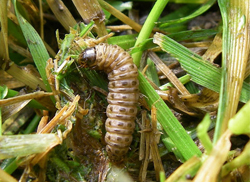
Did you know that a cow can produce up to 10 calves in a year or that you do not need to wait for 15 years to get a pedigree cow?
With the use of embryo transfer (ET), a relatively new technology in Kenya, you can get your pedigree calf in nine months and a milking cow in just two years.
With ET, your low quality cows can now give birth to many high quality offspring in a year. The technology involves the transfer of a fertilised embryo from a donor (a high- yielding cow) to the recipient, which then carries it to the end of pregnancy. This process is non-surgical.
The embryo should be normal morphologically for successful embryo carriage..the average number of calves produced per super ovulation is three to four. It is possible to induce a cow to super ovulate four to five times a year. Ten calves can be produced per cow per year.
“Compared to artificial insemination, which requires one to maintain pedigree improvement for up to 15 years to get the desired results, ET technology requires only two years,” says Dr Maurice Cherogo- ny, of the East Africa Semen and Embryo Transfer Association (EASETA).
ET enables use of local breeds known as ‘surrogate’ mother cows by implanting embryos from high-yielding cows. Any breed can be used as a surrogate mother. And this, he says, allows farmers to use even poor quality breeds such as Borana to produce high quality cows.
“Borana and Zebu are our favourite sur- rogates, considering their physical shape and good mothering ability,” Dr Cherogony says.
The donor is first subjected to hormonal treatment better known as super ovulation so as to release many eggs. The embryos are harvested after seven days and are ready for implanting into surrogate cows. Before implanting, the embryos are screened for normalcy using a very powerful microscope.
“The embryo should be normal morphologically for successful embryo carriage,” saysDr Cherogony, who adds that the average number of calves produced per super ovulation is three to four. “It is possible to induce a cow to super ovulate four to five times a year. Ten calves can be produced per cow per year,” he says. The service is offered by his association and supported by the regional World Bank East African Agricultural Productivity Project (EAAPP).
Dr Cherogony urges East African farmers to embrace the technology and take advantage of the collaboration between World Bank and Easeta to partly fund self-help groups to get high quality bulls at pocket-friendly prices.
Farmers are advised on the procedures and a programme tailor-made for them is developed, complete with financing options.
Though the embryo transfer cost may seem prohibitive, it does not have to be a hindrance because working as a group or with neighbours or a cooperative lowers the expense. A minimum package for embryo transfer is about Sh200, 000, which enables the harvesting of embryos from three donors and a transfer to a minimum of five surrogates.
“The association recommends that at least three donors and five recipients be given by the farmer for the transfer. Whereas the average yield with every flushing of donors is about five embryos, up to three donors are required to take care of cases where a donor may not respond to the hormonal treatment,” he says.
“A farmer can choose up to 15 recipients in the same package to reap maximum benefit. Where the farmer cannot get all the donors or recipients he can team up with neighbours to achieve this,” he adds.
“The cost of producing embryos a farm ranges between Sh5, 000 to Sh7, 000 per embryo, the same would cost not less than Sh20,000 to buy or sell,” he says. Although the conception rate for embryo transfer is at 50 per cent compared to 75 per cent for AI, the resultant pregnancy is of a higher value.”
A well-selected embryo transfer calf at birth costs Sh150,000. If the farmer does not have donors, the association can link him up with willing breeders. “The cost of embryos will be higher as breeders would normally add a mark-up to the cost of production,” the veterinary officer adds. Cooperatives can enter into an under- standing with the association and the technology will be provided to members. This is more cost effective due to the numbers. Since 2010, when Easeta received World Bank support, it has been able to flush more than 50 donors and obtain over 150 embryos.
